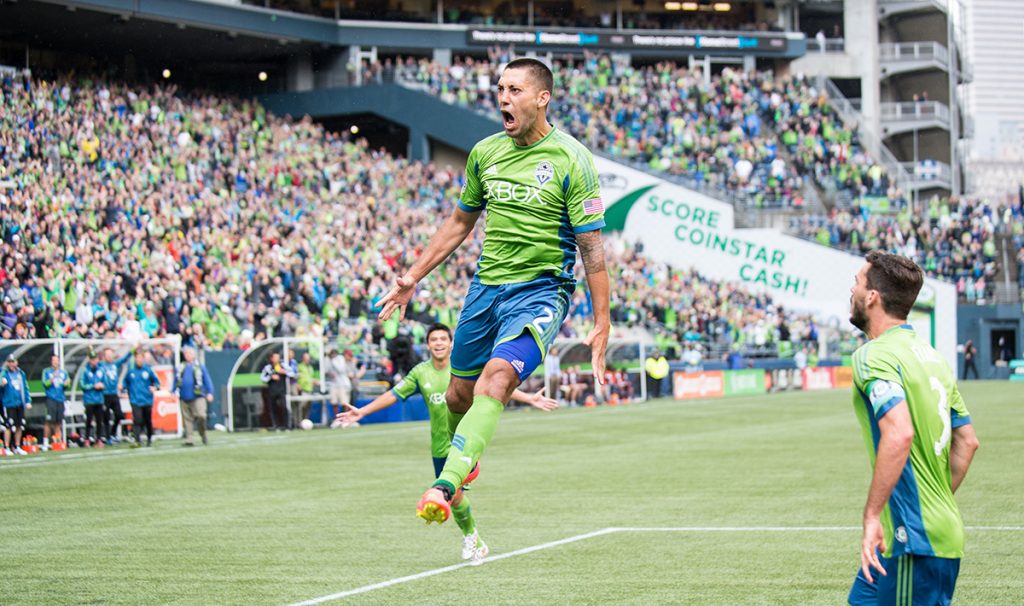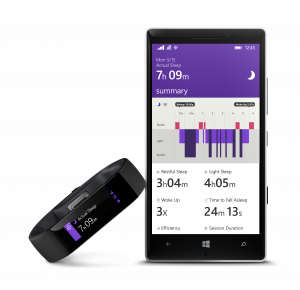
REINVENTING PRODUCTIVITY
Seattle Sounders score with SQL Server and fitness-tracking technology
The Emerald City’s football fans aren’t limited to those cheering for the Seattle Seahawks and the Washington Huskies. Here, footballers also include the soccer heroes of the Seattle Sounders FC, who are heading into Major League Soccer’s Western Conference Championship this weekend with LA Galaxy.
Forward Clint Dempsey, aka Deuce, was the most recent captain of the U.S. men’s national team during the world’s premier soccer tournament in Brazil this summer.
Like a lot of sports, stats play a huge role in satisfying results, both on the field and off. The team uses Catapult GPS units and Omegawave systems as well as other technologies to monitor these elite athletes’ health. These devices gather information on each player’s energy output, endurance, sleep patterns, nutrition and fatigue levels. All that tracking generates more than 350 columns of data, which prompted the team to create its own SQL Server database to house all those datasets.
“SQL Server is the place where all the data from different devices meshes together. It provides us a holistic view of the data and enables us to draw powerful insights from it,” says Ravi Ramineni, a performance analyst with the Sounders who built the SQL Server database. He’s responsible for data collection, data integration, modeling and analysis of the team’s performance data from practices and matches.
By the time the Seattle Sounders head onto the field, they’ve already kicked, ran and sweated thousands of hours of training. A big part of that fitness is planned, tracked and tweaked by staff whose job is to help the technology translate to better performance.
[SQL Server] provides us a holistic view of the data and enables us to draw powerful insights from it.
From the SQL Server database, Ramineni can easily pull stats, as well as create data visualizations and other analytics that then go to the coaching staff so they can make data-driven decisions. That could mean pulling players before injuries take them out. Or, it could also lead to adjustments based on different positions, building strength and speed using a variety of workouts and strength training. This data can also help determine who coaches should play, and for how long.

Players wear vests over their jerseys equipped with Polar heart rate monitors that record their maximum velocity, which measures how much physical output a player uses and how much work they do. GPS devices track how many kilometers they’re running, as well as speed and endurance. Fatigue Science keeps track of how players sleep and Omegawave gives coaches each athlete’s fatigue level.
During reserve games, players who may not normally make the first team get to spend valuable time on the field. And they’re allowed, during these practice matches, to wear all these devices. Not during regular season play, however.
The reason the Sounders gather all this data is so they can hone their players into finely tuned athletes who win games. This kind of information helps coaches put in the strongest lineup as often as they can.
Much of what works for the Sounders can work for anyone, not just professional athletes.
This is, after all, a sport in which players average nine miles of motion per match. During stretches of the season, they play up to five matches in 15 days. To be at their peak, they need to be the human equivalent of an engine that goes from zero to 60 in seconds.
One payoff came Aug. 24 during a match against Pacific Northwest rivals Portland Timbers, when Dempsey sprinted 80 yards to score a goal in the fifth match of the five matches in a 15-day stretch.

“That was all our work coming together,” Ramineni says. “Our objective is to ensure that the best players play the most amount of games. To win games, you have to stay healthy and prevent injuries.”
They’re also four-time U.S. Open Cup champs and consistently draw record-breaking crowds to their home matches at CenturyLink Field.
“Technology is about creating awareness about your lifestyle,” says David Tenney, the Sounders’ Sports Science and Performance Manager, who’s been with the organization since 2009. “If I had my way, every athlete on this team would be fast and explosive, with an aerobic base. They’d be strong and sleep nine hours a day. They’d eat really well, proteins and good fats. They’d do yoga and meditate.”
Much of what works for the Sounders can work for anyone, not just professional athletes. For one thing, the average person doesn’t have to strap on several devices, as these players do. Many people don’t go anywhere without their phones anymore, and because of that perpetual attachment, it’s a great device to track fitness stats.

The recently released Microsoft Band pairs wearable technology with the Microsoft Health app (available on Windows Phone, iOS and Android) to track your heart rate, steps, calorie burn and sleep quality. The insights delivered by Microsoft Health can help people make informed decisions about how to manage their fitness goals.
In newer Lumia smartphones – such as the Lumia 930, Lumia 830 and Lumia 735 – low-power SensorCore technology can also help achieve those goals. This internal chip uses motion-sensor hardware and software that collects data — such as activity GPS location. Windows Phone apps such as the MSN Health & Fitness app use SensorCore to turn your phone into an all-in-one tool for wellness. The new pedometer capability ships with the Lumia 630 and 635 and turns these devices into fitness trackers as it continuously counts all the steps taken during the day, as well as the calories burned and the distance traveled. This technology, which is in your pocket or palm of your hand, analyzes activity and tracks goal progress.
For everyone, fitness comes down to three things: being active, moving your body safely and efficiently and sleeping well.
Other apps that use SensorCore include Fit Buddy, Adidas’ miCoach train & run and Track Runner.
Or, maybe you want to exercise from home? Then try Xbox Fitness on Xbox One, which uses Kinect technology to measure and evaluate heart rate, muscle engagement and form. It also features famous buff bodies to train you, like Jillian Michaels.
Tenney says that for everyone, fitness comes down to three things: being active, moving your body safely and efficiently and sleeping well. Good habits and discipline can also kick in benefits.
So, are you ready to get fit?
Lead photo credit: Seattle Sounders FC.















